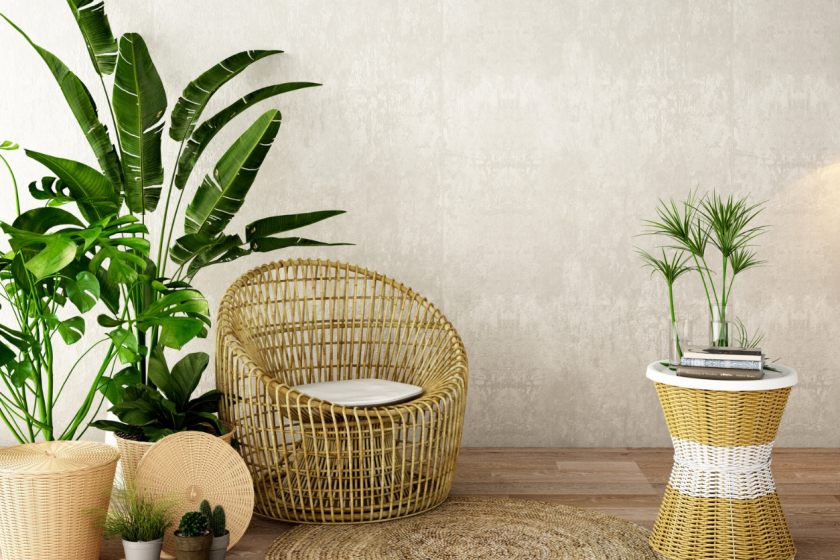Not a green thumb? No worries. We speak to plant expert Craig Miller-Randle to get the low-down on simple, low-maintenance plants that will spruce up your space in no time.
When it comes to styling your space, indoor plants are probably somewhere near the top of your list. There’s no denying that greenery brings a natural, tranquil feel to every room, and has even been found to reduce stress levels and improve air quality. But not everyone has the time, patience or knowledge to care for a range of different plants.
Cue: plant expert and author of Green Thumb, Craig Miller-Randle. We chat to Miller-Randle about the best and most hardy indoor plants that will flourish with minimal effort, the dos and don’ts of plant care, and his top plant styling tips to elevate your space. Your luscious green sanctuary awaits…
What are your 3 favourite low-maintenance indoor plants?
- The fruit salad plant (Monstera deliciosa): “Easy to find: tick; affordable: tick; tolerant of varying light, water, soil and temperature: tick. Add to this its incredible, iconic look and this is why I call it the little black dress of house plants,” Miller-Randle writes in Green Thumb.
- ZZ Plant (Zamioculcas zamiifolia): Perfect for newbies and those who want zero-fuss foliage.
- The snake Plant (Dracaena trifasciata): If you’re a serial plant killer the Snake Plant is for you. Its elegant yet hardy and won’t need repotting for years.
What are your top plant styling tips for indoor spaces?
Always group plants in odd numbers, our eyes respond to these arrangements by scanning the whole area surrounding the display and taking in the complete vista whereas even numbers keep eyes focused solely on a narrow field which is less pleasing to our senses.
If you can, choose the decorative pots and planters that match your furniture and interior scheme first and then choose plants to suit the position and pots. This leads to a far more considered and cohesive result.
I use the “one or the other rule” — either the leaves are the focus or the planter, never both. If you choose a plant that has patterned leaves or a complex shape, keep the planter simple. If your plant has simple leaves and subtle pattern, opt for more decorative and fancy planters.
Are there any plants that can naturally improve health and wellness?
I think any plant grown indoors can contribute to an overall sense of wellbeing, that’s been shown over and over again. Just the act of tending to your plants, looking after them and then having them respond to your care is both meditative and immensely rewarding. A study by RMIT and Melbourne University found three or more plants in an average room can improve focus and contribute to a sense of calmness, and the more plants the better the results.
What are some common indoor plant mistakes and how can we avoid them?
The biggest would be watering regularly without making sure your plant(s) actually need it. A lot of people will tell me “I water all my plants every Saturday” for example, but a plant’s water requirements will vary from season to season and depending on the position they’re in.
The best way to judge is to use your finger! Gently dig into the potting mix about 2 cm, if the soil underneath is dry, the plant needs water; if it’s still damp, it doesn’t and you can check again in a few days.
Check your plants for pests regularly — once a month is fine. You need to check under the leaves and in areas where pests like to hide like the leaf axils, where the leaf joins the main stem. Too often plant parents only notice insects after they have multiplied to a level that’s more difficult to treat, but spotting them early means you can eradicate them easily and keep your plants healthy and strong.
DID YOU KNOW:
There are 5 ways you can catch up with SPA+CLINIC?
- Our quarterly print magazine, delivered to your door. Subscribe here.
- Our website, which is updated daily with its own completely unique content and breaking news.
- Our weekly newsletter – free to your inbox! Subscribe here.
- Our digital magazine – click here to view previous issues.
- Our social media – see daily updates on our Instagram, Facebook & Linkedin





